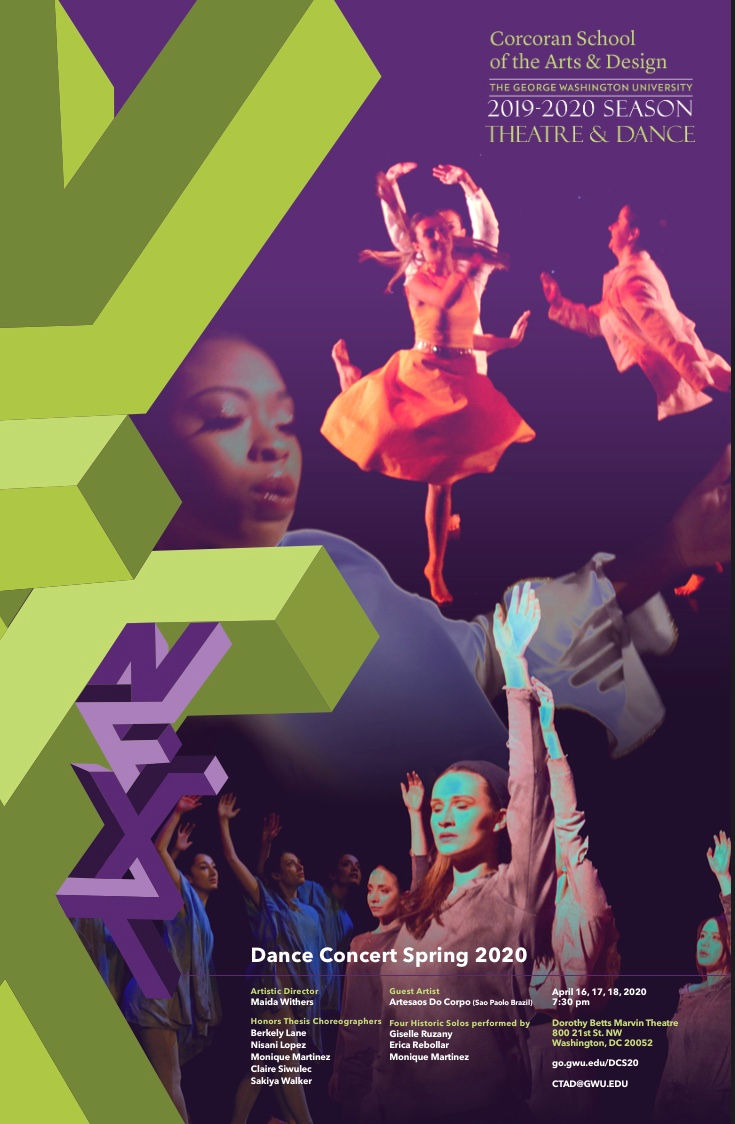
WE'RE ALRIGHT, AREN'T WE?
Honors Thesis Spring 2020
Advisor: Maida Withers
My choreographic thesis titled We’re Alright, Aren’t We? uses evidence from modernist literary texts to convey feelings of solitude and hopelessness faced by humanity in light of industrialization, war, and urbanization. My goal was to establish and represent through movement, sound, lighting, and objects, the insignificance of the human condition and interpersonal relationships often communicated in Modernist works.
The works that influenced this piece are Vladimir Nabokov’s “Signs and Symbols,” Ernest Hemingway’s “Hills Like White Elephants,” Franz Kafka’s “The Metamorphosis,” John Cheever’s “The Enormous Radio,” and the most defining work of the 20th century, T.S. Eliot’s The Waste Land.



THE CAST
Katie Auerswald, Ruby Dietz, Sarah Druckman, Trevor Franz, Hannah Krantz, Aaron Mancus, Amanda Msallem, Valerie Pena, Anna Stolt, Christina Zengin-Karaian, Holly Zimmerman, Gilam Zhang

COSTUME
DESIGN
Judy Hansen
The envisioned costume design recognizes the dancers as people, wearing pedestrian, yet moveable clothing. The color scheme is toned-down jewel shades.
The corps costume draws inspiration from the military in terms of color and uniform-like appearance. The soloists have a more individualized and feminine design. The colors used for the soloist costumes are navy, burgundy, and copper.
Showing Video
In less than two months through fifteen rehearsals, my dancers and I created twelve minutes of work. On March 11th, 2020, we unknowingly had our only performance. The piece at that point was complete in that it had a beginning, middle, and end, but there was still much cleaning and editing to be done. Choreography and cues needed clarification, more practice with the props was needed, the soundscape was incomplete, and some sections just were set to be completely redone – it was messy but it showed the true process.

RESEARCH AND PROCESS
The best method for understanding a period and the people who lived through it is art. Art, as opposed to history, is not an unbiased, factual account of a century, decade, year, or even a single day; it captures the authentic condition of the artist and essence of the moment. Art, despite being abstract and fictionalized, is much more truthful than history can be.
Modernism emerged in response to unprecedented change. When outdated forms of expression are no longer suitable to describe truthfully what it is to be human, we find another. The dramatic transformations and traumatic events of the 20th century gave rise to a generation of artists who founded a new norm. Our current position living through a 21st-century pandemic puts us at a crossroads for change that has already begun to take place in the virtual landscape. Regardless of if and when the world returns to its previous state before COVID-19, the effects of change are undeniable, and the arts will reflect it.











